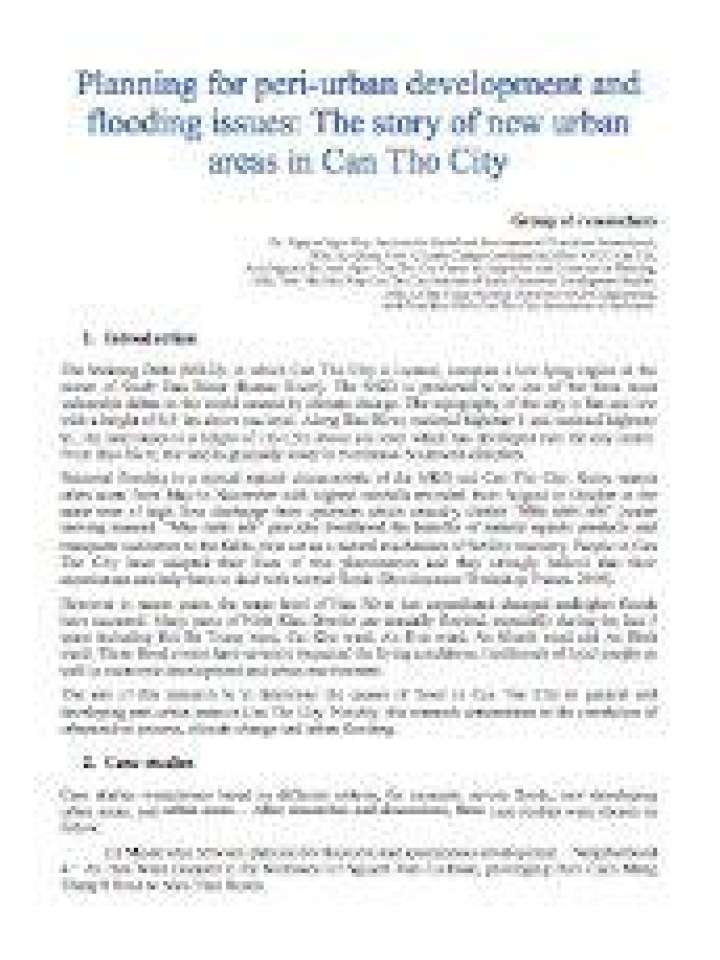Planning for peri-urban development and flooding issues: The story of new urban areas in Can Tho city
The aim of this research is to determine the causes of flood in Can Tho City in general and developing peri-urban areas in Can Tho City. Notably, this research concentrates in the correlation of urbanization process, climate change and urban flooding.
The Mekong Delta (MKD), in which Can Tho City is located, occupies a low-lying region in the center of South Hau River (Bassac River). The MKD is predicted to be one of the three most vulnerable deltas in the world caused by climate change. Seasonal flooding is a typical natural characteristic of the MKD and Can Tho City. Rainy season often starts from May to November with highest rainfalls recorded from August to October at the same time of high flow discharge from upstream which annually creates “Mùa nước nổi” (water moving season).
In recent years, the water level of Hau River has unpredicted changed andhigher floods have occurred. Many parts of Ninh Kieu District are annually flooded, especially during the last 5 years including Hai Ba Trung ward, Cai Khe ward, An Hoa ward, An Khanh ward and An Binh ward. These flood events have severely impacted the living conditions, livelihoods of local people as well as economic development and urban environment.
Explore further
